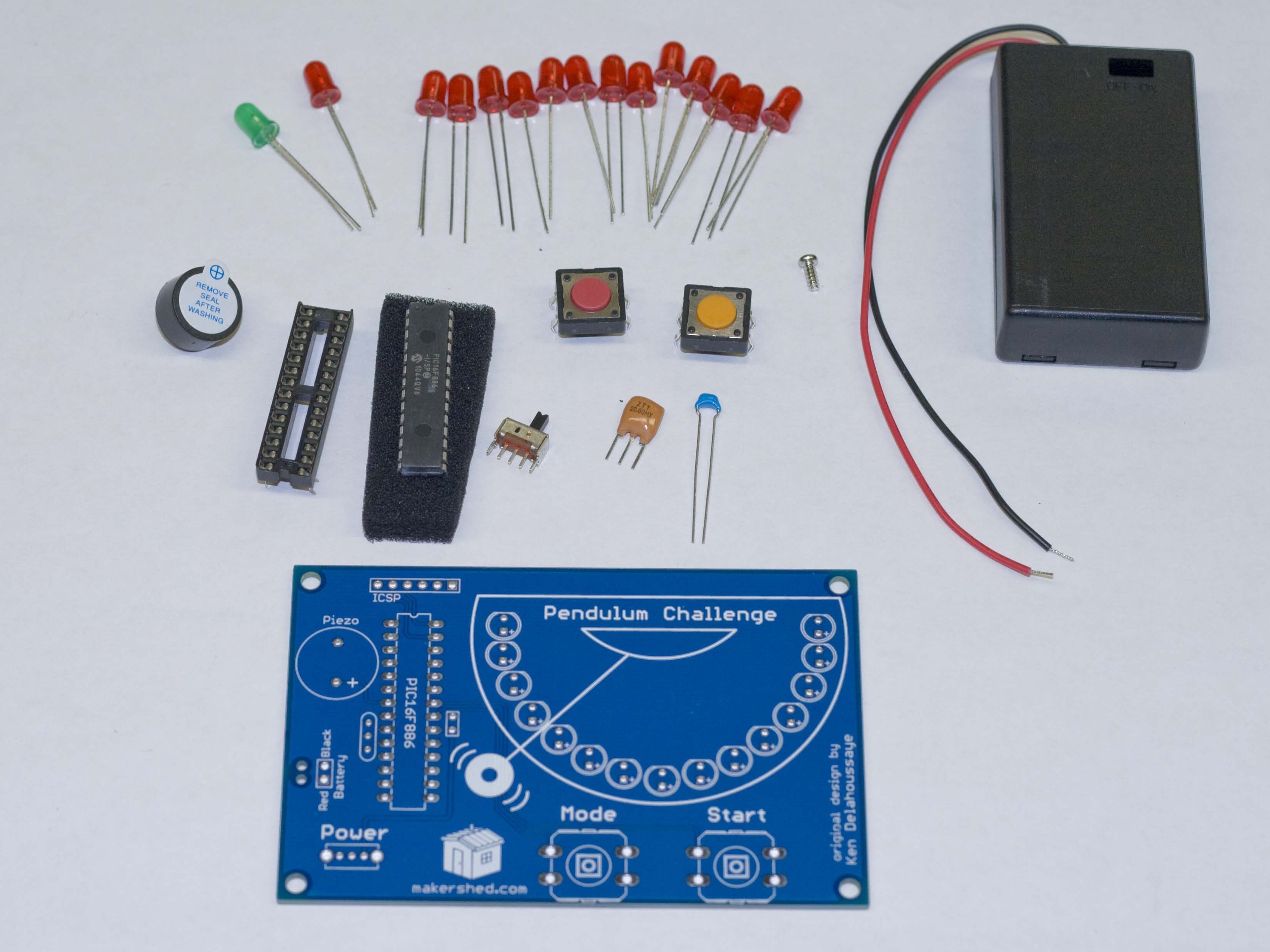It’s time to put in the microcontroller. It looks like a black rectangle with lots of shiny legs. It’s probably stuck into a bit of foam so go ahead and pull it out.
Like the IC holder, the microcontroller has a notch at one end. This notch needs to be oriented the same as the notch on the IC holder and the outline on the board.
Unfortunately, the microcontroller isn’t going to fit right into the IC holder without bending the legs in a little. This is easiest to do by holding the microcontroller by each end and gently “rocking” the legs against a flat surface like a table. Do this on each side gradually until the legs fit into the IC holder.
Finally, place the microcontroller on top of the IC holder paying UTMOST ATTENTION TO THE DIRECTION OF THE NOTCH! BE SURE IT MATCHES THE DIRECTION OF THE OTHER NOTCHES. I’M SUPER SERIOUS!
Gently press down on the microcontroller (rocking may be necessary) until it is seated into the IC holder.



